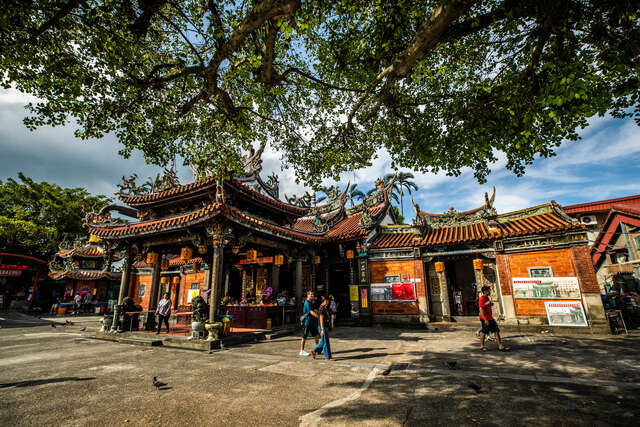Lianzuo Mountain Guanyin Temple Introduction
The local people commonly refer to it as Guanyin Pavilion. It is now classified as a third-level historical site. Although the temple has undergone multiple renovations since its establishment, it still maintains the appearance and scale of over 200 years ago, making it a valuable cultural asset. In 2013, it was selected as one of the "Top 100 Religious Sites in Taiwan" by the Ministry of the Interior, carrying significant historical meaning. Lianzuo Mountain stands alone in the Dahan River, resembling a lotus flower emerging from the water, hence its name. In the third year of the Qianlong era (1797), it was funded and established by Zhong Shangyi and others as a Buddhist temple on the mountainside, dedicating it to Guanyin Bodhisattva and the eighteen arhats, named Guanyin Temple. By 1904 (Meiji 37), the gentry of Daxi, recognizing the temple's risk of collapse, raised funds for major renovations and added a worship pavilion. In 1925 (Taisho 14), further funding was gathered for a complete restoration, and in 1934 (Showa 9), the original worship pavilion was transformed into a hipped roof pavilion, which remains today. The architecture of Lianzuo Mountain Guanyin Temple is limited by terrain factors, preventing vertical development, thus it is a single-hall temple with five entrances. The roof features a three-ridge design, and in front of the main hall is the worship pavilion, which is the temple's most distinctive feature, featuring a heavy eave and hipped roof, with a coffered ceiling adorned with the Eight Trigrams. The intricate cut-outs, mud sculptures, wood carvings, stone carvings, and paintings within the temple are all simple yet elegant. To the right of the temple, under a shaded area about ten meters away, there is a Jing Sheng Pavilion (Xie Zi Pavilion), which is also an important ancient structure known as "Kuei Xing Tower," built in 1936 (Showa 11). It houses the deity of Wenquxing, constructed in three segments of red brick. The upper and middle layers have couplets, while the dragon and tiger stone carvings on the pavilion are vivid and lifelike, with exquisite cut-outs and sculptures. To the right of the temple is Kuei Xing Tower, a place for praying for academic success, dedicated to Kuei Xing, the god of literature from the Big Dipper, serving as a protector of academic luck. This tower also functions as a Calligraphy Pavilion, featuring structures for writing paper and the temple's flying eaves with cylindrical tiles, decorated with auspicious beast tiles and reliefs, making it quite splendid. Next to the Kuei Tower, there is a small pavilion dedicated to the God of Wealth and the Tree God, which appears simple and unadorned, but it is said to have existed before the construction of Guanyin Temple, holding quite a bit of history. Source: Cultural Affairs Bureau of this government.





































